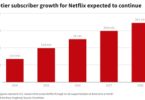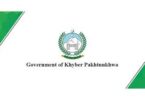F.P. Report
Washington, DC: The Executive Board of the International Monetary Fund (IMF) concluded the Article IV consultation [1] with Belize and endorsed the staff appraisal without a meeting on a lapse-of-time basis. [2]
The COVID-19 pandemic had a severe impact on Belize in 2020, leading to a 16.7 percent contraction in real GDP and an increase in public debt to an unsustainable level of 133 percent of GDP. To address this situation, the government presented a Medium-Term Recovery Plan (MTRP) to guide the recovery and lower public debt to 85 percent of GDP in 2025 and 70 percent of GDP by 2030 through the implementation of fiscal consolidation, growth-enhancing structural reforms, and debt restructuring. Encouraging progress towards restoring debt sustainability was made in 2021, including by implementing sizable fiscal consolidation and by completing a novel debt for marine protection swap with The Nature Conservancy, which not only reduced public debt by 12 percent of GDP in 2021, but also enhanced the protection of the marine environment going forward.
Economic activity is recovering strongly. Real GDP expanded by 9.8 percent in 2021 and is projected to grow by 5.7 percent in 2022 and 3.4 percent in 2023 led by the recovery of the tourism sector. End of period inflation increased to 4.9 percent in 2021 and is projected at 5.2 percent for 2022 as the war in Ukraine and related economic sanctions keep global energy and food prices elevated. The fiscal position improved significantly in FY2021, with the primary balance increasing to 1.7 percent of GDP in FY2021, led by a sharp cyclical recovery of revenue and a decline in expenditure due to fiscal consolidation, and public debt declining to 111 percent of GDP in 2021. Going forward, the primary balance is projected to decline to –0.1 percent of GDP in FY2022 due to measures adopted by the government to mitigate the rise in fuel prices, and to stabilize at near 0.6 percent of GDP during FY2023-32 in a passive scenario with no additional measures. Public debt is projected to continue falling to 85 percent of GDP by 2032, although it would continue to be assessed as unsustainable in the absence of additional measures as it would remain above the 70 percent of GDP threshold for sustainability over the next decade.
Executive Board Assessment
Belize’s key policy priority is to restore debt sustainability. This requires preserving the fiscal savings achieved in FY2021, ensuring that the measures adopted to mitigate the rise in fuel prices are temporary, and implementing additional fiscal consolidation and growth-enhancing structural reforms with the goal of increasing the primary balance to 2.5 percent of GDP in FY2025 and reducing public debt to 60 percent of GDP by 2031. Anchoring this strategy on a medium-term fiscal strategy with clear targets and specific measures would enhance its credibility.
Fiscal consolidation should rely on both revenue and expenditure measures. Following the implementation of expenditure-based consolidation in FY2021 and a temporary relaxation in FY2022, the authorities should consider raising revenue by broadening the tax base and enhancing revenue administration, while containing current expenditure and expanding targeted social and resilience spending. Executing these plans will be challenging given limited capacity, political pressures, rising energy and food prices, and downside risks. In this context, it will be key to prepare contingency plans in case public debt does not fall as planned, including additional revenue and expenditure measures and debt operations.
Implementing growth-enhancing structural reforms would accelerate the reduction in public debt and reduce the burden on fiscal consolidation. A key priority is to strengthen the business climate by improving access to credit for SMEs; reducing entry barriers for new businesses; enhancing human capital and infrastructure; reducing crime by providing adequate resources to law enforcement and social programs; and building resilience to climate change and natural disasters by adopting a DRS focused on improving structural, financial, and post-disaster resilience and based on a consistent multi-year macro-fiscal framework.
Restoring public debt sustainability would also strengthen the currency peg and lower external imbalances. Belize’s external position is assessed as weaker than justified by medium term fundamentals and desirable policies. Reducing the current account deficit to its equilibrium level and improving reserve adequacy requires preserving the fiscal savings achieved in FY2021, ensuring that the measures adopted to mitigate the rise in fuel prices are temporary, and implementing additional fiscal consolidation and growth-enhancing structural reforms. It also requires reducing central bank financing to the government and strengthening central bank independence.
The authorities should continue seeking financing for their ambitious climate change mitigation and adaptation agenda. Belize’s updated Nationally Determined Contribution presents the country’s ambitious plans for 2021-30, including large reductions in greenhouse gas emissions by restoring ecosystems and expanding renewable energy, and actions to adapt to climate change in agriculture, tourism, and fisheries. As these actions will be beneficial for Belize and the world, the authorities should continue seeking financing from donors and bilateral and multilateral creditors.
Safeguarding financial stability and strengthening the AML/CFT framework remain priorities. Following the review of the loan portfolios of banks and credit unions, the central bank should ensure that any extended measures are time-bound and targeted, and financial institutions resume the regular classification and restructuring procedures. Efforts to strengthen AML/CFT supervision of banks should continue and sanctions for non-compliance should be enforced. The authorities should also prioritize reforms to mitigate the ML/TF risks stemming from the IFS sector. Advancing these reforms will help protect the country’s correspondent banking relationships.
[1] Under Article IV of the IMF’s Articles of Agreement, the IMF holds bilateral discussions with members, usually every year. A staff team visits the country, collects economic and financial information, and discusses with officials the country’s economic developments and policies. On return to headquarters, the staff prepares a report, which forms the basis for discussion by the Executive Board. [2] The Executive Board takes decisions under its lapse-of-time-procedure when the Board agrees that a proposal can be considered without convening formal discussions.





